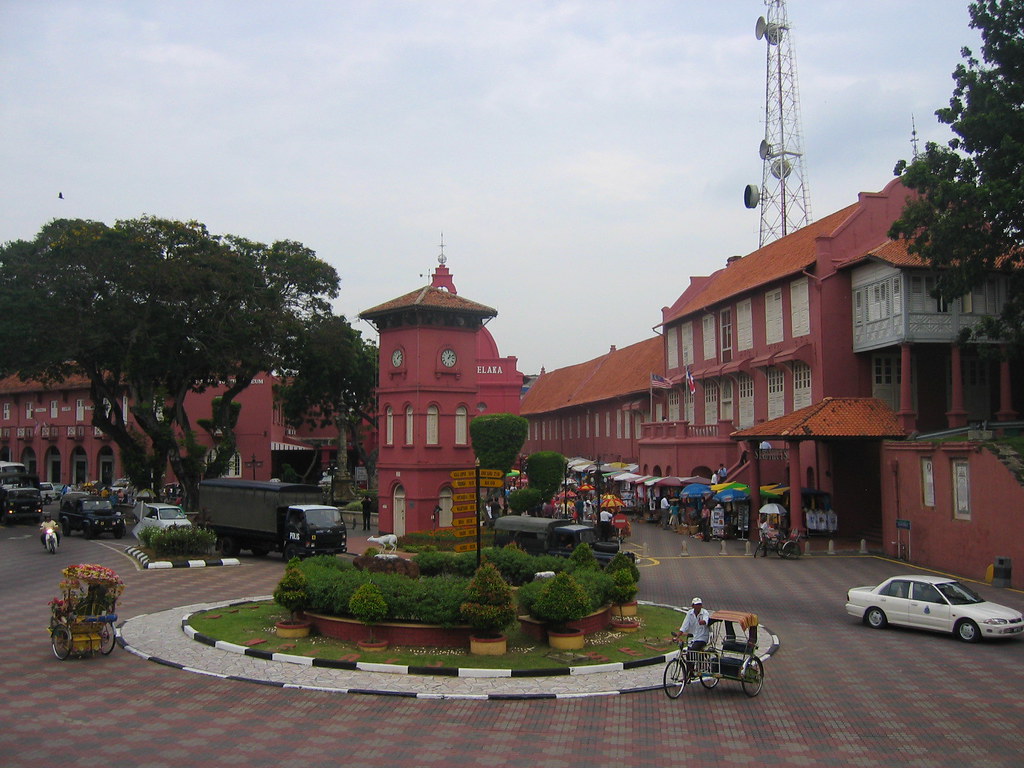
 Malaysia
Malaysia
N5 25 17 E100 20 45
Date of Inscription: 2008
Minor boundary modification inscribed year: 2011
Criteria: (ii)(iii)(iv)
Property : 218.76 ha
Buffer zone: 392.84 ha
Ref: 1223bis
News/Travelogues:
Melaka and George Town, historic cities of the Straits of Malacca have developed over 500 years of trading and cultural exchanges between East and West in the Straits of Malacca. The influences of Asia and Europe have endowed the towns with a specific multicultural heritage that is both tangible and intangible. With its government buildings, churches, squares and fortifications, Melaka demonstrates the early stages of this history originating in the 15th-century Malay sultanate and the Portuguese and Dutch periods beginning in the early 16th century. Featuring residential and commercial buildings, George Town represents the British era from the end of the 18th century. The two towns constitute a unique architectural and cultural townscape without parallel anywhere in East and Southeast Asia.
Melaka and George Town, Malaysia, are remarkable examples of historic colonial towns on the Straits of Malacca that demonstrate a succession of historical and cultural influences arising from their former function as trading ports linking East and West. These are the most complete surviving historic city centres on the Straits of Malacca with a multi-cultural living heritage originating from the trade routes from Great Britain and Europe through the Middle East, the Indian subcontinent and the Malay Archipelago to China. Both towns bear testimony to a living multi-cultural heritage and tradition of Asia, where the many religions and cultures met and coexisted. They reflect the coming together of cultural elements from the Malay Archipelago, India and China with those of Europe, to create a unique architecture, culture and townscape.
Criterion (ii): Melaka and George Town represent exceptional examples of multi-cultural trading towns in East and Southeast Asia, forged from the mercantile and exchanges of Malay, Chinese, and Indian cultures and three successive European colonial powers for almost 500 years, each with its imprints on the architecture and urban form, technology and monumental art. Both towns show different stages of development and the successive changes over a long span of time and are thus complementary.
Criterion (iii): Melaka and George Town are living testimony to the multi-cultural heritage and tradition of Asia, and European colonial influences. This multi-cultural tangible and intangible heritage is expressed in the great variety of religious buildings of different faiths, ethnic quarters, the many languages, worship and religious festivals, dances, costumes, art and music, food, and daily life.
Criterion (iv): Melaka and George Town reflect a mixture of influences which have created a unique architec¬ture, culture and townscape without parallel anywhere in East and South Asia. In particular, they demonstrate an exceptional range of shophouses and townhouses. These buildings show many different types and stages of development of the building type, some originating in the Dutch or Portuguese periods.
Suggested Bases:
George Town is the capital city of the island and state of Penang, on the west coast of peninsular Malaysia. It is the second largest city in Malaysia, with a population of 708,000 as of 2010, and 2.5 million in the Greater Penang area. Founded as a trading outpost by the British in 1786, George Town has evolved into a melting pot of sorts, with its cosmopolitan, multicultural character evident in its architecture, festivals and even food; the city is well-known as the food capital of Malaysia. Aside from the city’s living heritage coexisting with modern shopping malls and skyscrapers, a variety of natural attractions, such as the Penang Hill and beaches, are also within easy reach. Along with fellow former Straits Settlement, Malacca, George Town was listed as a UNESCO World Heritage Site in 2008. [read more]
Malacca City (Malay: Bandaraya Melaka, and officially Melaka City) is the capital of the state of Malacca, Malaysia. Modern-day Malacca is a vibrant old city with a unique historical and cultural background from being the capital of a powerful Malay kingdom before the colonial era, as well as subsequent Portuguese, Dutch and British rule. The city centre was listed by UNESCO as a World Heritage Site in July 2008, along with Georgetown, Penang. Before the arrival of the first Sultan, Malacca was a simple fishing village inhabited by local Malays. The Malacca Sultanate was founded by Parameswara, also called Iskandar Shah or Sri Majara, the last Raja of Singapura (the Malay name of Singapore) following a Majapahit attack in 1377. Parameswara found his way to Malacca in 1400 where he found a port, accessible in all seasons and on the strategically located narrowest point of the Malacca Strait. [read more]
Kuala Lumpur, called KL by locals, is Malaysia’s federal capital and largest city at 6.5 million (city-proper population of 1.8 million). Kuala Lumpur is a cultural melting pot with some of the world’s cheapest 5-star hotels, impressive shopping districts, food from all parts of the world, and natural wonders within day-trip distance. As in most of Malaysia’s cities and towns, Malaysian Chinese form a majority of the population, at 55%, in Kuala Lumpur. Malays (who form the majority of Malaysia’s population, overall) and Malaysian Indians are also present in large numbers in the city, and there are substantial numbers of more recent immigrants and workers from South and Southeast Asia, Eurasians, and expatriates from Western countries and the Middle East. The result is a mix of cultures that meld together to make Kuala Lumpur a modern and diverse capital. [read more]


Leave a comment